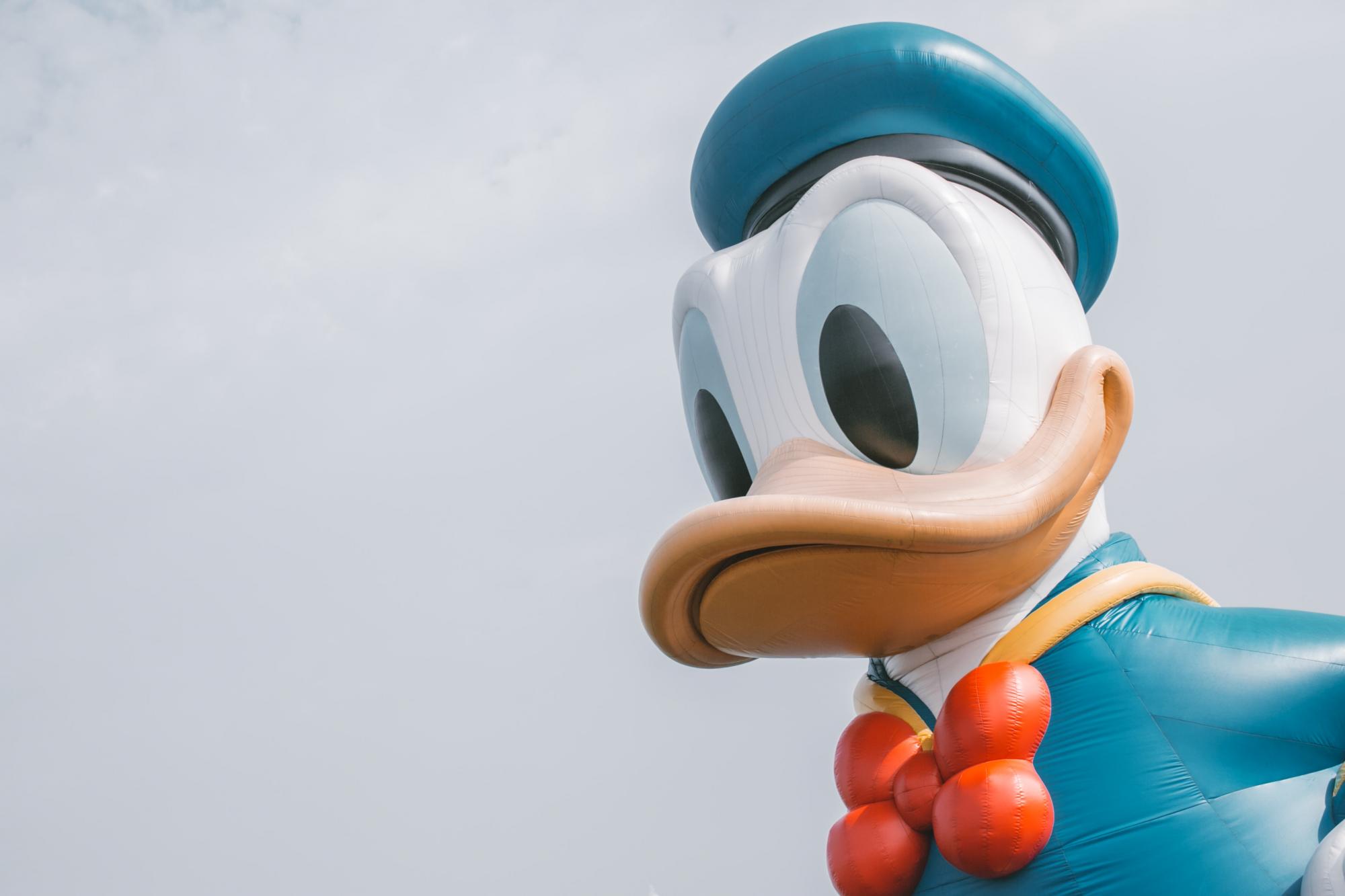Test- FTSE 100 Kicks Off August on a High as BP and Senior Lead Market Momentum
$11
10 Oct 2025, 13:13

Donald Duck - Image rights Kin Li

Disney is a well-known and established entertainment company with a diverse portfolio, including theme parks, movies, TV shows, and more. The company's stock can be affected by a variety of factors, such as changes in consumer behaviour, the performance of its movie franchises and shifts in the economy.
Disney saw immense returns throughout the pandemic gaining over 160% from the 2020 low to the 2021 high, since then it’s been a slippery slope, down over 51% at the time of writing. Current shares sit at $99. Disney has been a stock we’ve watched a Minipip for a long time, simply because of its reputation, brand image and resilience within the economy – anyone who has children or has had children knows how important Disney is for the development of little ones.
This huge 51% drop has meant Disney is back to levels seen in January 2015, which raises the question of valuation. At the time of writing the market cap stands at about $180bn, with revenues at $82bn and a profit after tax of $3.1bn.
The reason for the heavy fall though is justified by a few potential issues in the balance sheet, income and cash flow statements. To make things simpler below is a table which shows a financial comparison of 2022 vs 2014 since the stock is at the same value.
|
|
2014 |
2022 |
Change |
|
Revenue |
$48.8BN |
$82.7BN |
+69.4% |
|
Net profit |
$8BN |
$3.55BN |
-55.62% |
|
Profit margin |
16.3% |
4.29% |
-73.68% |
|
|
|
|
|
|
Cash on hand |
$3.42BN |
$11.6BN |
+239% |
|
Total assets |
$84.14 |
$203.63 |
+142% |
|
Total debt |
$35.96 |
$104.75 |
+191.3% |
|
Net asset margin |
42.7% |
51.4% |
+20.4% |
Taking just the key points from the income statement and balance sheet above, as an investor there are a few things to take into consideration. Revenue has grown 69.4% over the 8-year period, however, profit margins have shrunk by over 73%. In 2014 Disney was operating on a 16.3% net profit margin whereas last year, the margin was just 4.3% - A steep drop.
Looking at the balance sheet, cash on hand has grown 239% from $3.4bn to $11.6bn, however, while this is good, looking at operating cash flow in the last quarter Disney lost over $974m, which is a concern as every other quarter (expectation of Q4 21) since 2009 has been positive. The trend from this is simply that Q4 for Disney is usually a rough ride with operating cash flow running close to negative. Cash on hand growing as it has done though is good because it can give investor confidence that despite a rocky cash flow the company has the cash reserves to back up any shortfalls. Total assets also grew 142% over the 8-year period, however, total debt grew 191%, as a result, the net asset margin has increased from 42.7% to 51.4%, which is a 20.3% gain in net debt, again, not great, but not a concern given the investments into Disney+ and a tough pandemic. It is no surprise that margins had dropped and debt had increased. Disney needed to act fast to ensure that park revenue was replaced, and it was, by Disney+ - A saviour for the company.
Taking all the above into consideration it's pretty evident that Disney’s decline in 2022 might have been overstretched. As restrictions continue to be lifted, 2023 could be the year when operations return back to normal for parks. Tie this in with Disney+ and mechanise Minipip could see Disney hitting $95bn revenue in 2023 with profit margins increasing to about 6-8%. At a 51% net positive balance sheet as well, even though cashflow has been rocky recently Disney likely has this under control. If profit margins can increase, this will give investors the confidence they need for the future.